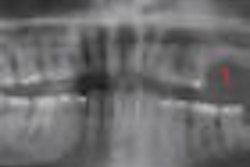General dentists can detect changes in radicular features in radiographs prior to root canal treatment when the changes are extensive, but they miss some more-specific feature changes, according to a study in Dentomaxillofacial Radiology (January 2012, Vol. 41:1, pp. 43-54).
A team of Indian researchers set out to evaluate which radicular radiographic features general dentists want to interpret, determine which of the radicular radiographic features general dentists interpret and which ones they miss in a diagnostic radiograph, and correlate how accurately general dentists are able to interpret radiographic features.
They gave 20 general dentists two sets of questionnaires. The first set asked the practitioners to fill out the findings they would elucidate in a diagnostic radiograph, while the second set consisted of 30 randomly selected intraoral radiographs they were to interpret.
In the first set of questionnaires, more than 50% of dentists said they would interpret periapical changes, calcification, root curvature, and the number of root canals, the study authors noted. Fewer than 50% said they would interpret canal morphology, open apex, resorption, fracture, number of roots, and lamina dura.
In the second set of questionnaires, more than 90% missed grade 1 or 2 periapical changes (according to periapical index scoring), resorption, and canal calcification, according to the researchers. More than 80% of dentists missed extra roots and root curvature buccally, while no dentists were able to interpret the periodontal ligament width changes, lamina dura, and canal variation (C-shape).
"General dental practitioners are able to detect radiographic changes when they are extensive, but they miss periodontal ligament width and lamina dura changes," the researchers concluded.



















